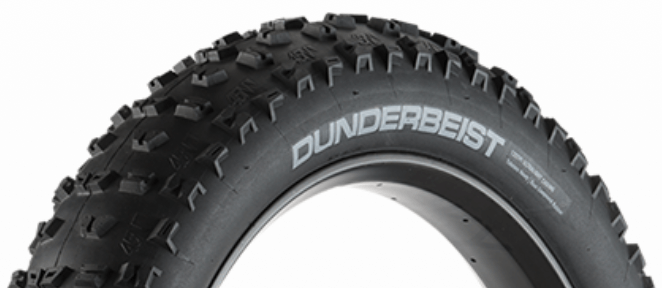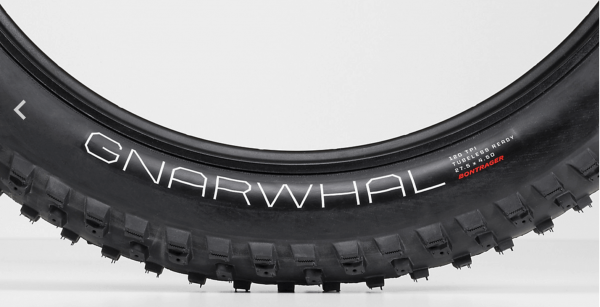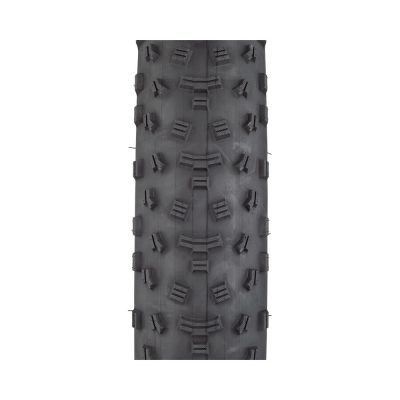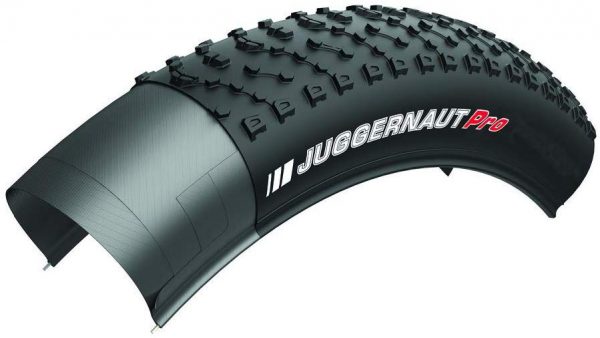So many people around the world love the idea of buying a fat bike so that they can use it on the local trails. A fat bike that can handle so many different terrains is undoubtedly beneficial, and that is why people are gravitating towards them in the first place.
Many look at these bikes as an upgrade over a mountain bikes, and with the right tires, trail riding can be a lot of fun. Finding the right tires makes a huge difference, and while the ones that come on a bike in the first place are a good fit for most people, it might be worth upgrading.
We break down all the fat bike tires that stand out the most right now for trail riding. These tires not only come from some of the top manufacturers, but they are perfectly designed for the trails.
Since riding on a trail in the snow is such a different experience, the tires are split up between neutral paths, and snowy/icy trails. Having tires built for wintery conditions in a warmer climate does not make a lot of sense.
For Neutral Trails
1. 45NRTH Dunderbeist 26×4.6”

As one of the most trusted names in the entire industry, there is no doubt that a person who goes with a tire from 45NRTH will come away very satisfied. The Flowbeist is a very neutral trail ride tire for the bike riders wanting to upgrade their current set up. It is a little expensive, but a noticeable upgrade instead of a lateral move.
One of the cool features about these tires is that there is a front and rear specific option. The rear is actually called the Dunderbeist, so make sure to purchase the Dunderbeist and Flowbeist for the right job. They both offer a great dual compound rubber that stands up against virtually anything on the trails.
If this tire from 45NRTH seems good, but not great, take the time to explore all of the different options they offer at this time. They are truly known as one of the premium sellers for fat bike tires, and other products as well to enhance the riding experience. Each of their tires has the ability to fit a wide range of rims so that they are only subtle adjustments needed to get brand new trail tires.
2. Kenda Juggernaut Pro 26×4.5”
As a very lightweight tire that so many people have used as a solid replacement, the Juggernaut Pro from Kenda is a perfect solution for many. People who do not want a huge fat bike tire can get a smaller version of the same tire, or they can stick with the relatively low profile of the 26×4.5″.
Some people like the idea of going with a fat bike, but they do not want a tire that is 4.5 inches or even wider. Kenda offers a 4.0 inch version if a person wants to go in that direction. It provides a little more speed on the trails, but not quite the same floating opportunities that some people are looking for.
Everything on this bike tire is geared more towards being fast rather than being comfortable and versatile. The tread has very open lugs, and it comes in a chevron pattern that subtly increases
speed. This keeps the tires moving quickly during the entire ride, which is a huge bonus for some riders out there.
There are a number of varieties from the company, so do some comparative shopping before ultimately picking on the right width. The tires are just over $100 each for most people, which is not too bad when replacing old tires with a quality upgrade.
These tires are versatile enough that they should be capable of handling any type of trail riding, or road riding for that matter. Just do not take these in the middle of a trail with a bunch of fresh snow on it. It might not have the ability to handle itself properly on a surface that is that slippery.
3. Maxxis Minion FBF 26×4.8”
Every single rider has different expectations when investing in a pair of fat bike tires. Some people want to go as fast as possible, while others are looking for stability and a connection with the ground when navigating a trail. For those who want fat bike tires with the best grip they can possibly find, Maxxis Minion fits that exact category.
In the past, the company has produced a mountain tire that goes by the same name and provides the same type of quality grip. They have adjusted that tire and made one specifically for a fat bike. Coming in at 4.8 inches wide, it offers outstanding coverage that keeps riders of all skill levels from losing traction.
Features include a dual compound tread, a bead that is portable, 120 tpi casing, and solid walls that all but eliminate the chance of a flat tire. The walls are thick enough that the tire is 100% ready to go tubeless from the beginning if a fat bike rider hopes to do that.
Since it does have a lot of grip and is a bit on the heavy side, do not practice at any speed records with this tire. Many people know it is not built for speed going in, and they are fine with the sacrifices they are making.
This is more of an exploratory type of fat bike tire that people use so that they have the ability to go anywhere on a trail and not have to worry about finding themselves in trouble. It takes a lot for this tire not to perform at the highest of levels.
Riders who want this same bike but in a snow build should look at the Maxxis Colossus. It competes very well with any of the tires listed below.
For Snowy/Icy Trail Riding
1. Bontrager Gnarwhal Studded 26×3.8”

To go with studded tires or not? That is a common question many people who ride in the snow on fat bikes continuously ask themselves. Trails get pretty icy and snowy during the winter, so having tires that have studs on them certainly help. Of course, they do not make sense for the entire year, and some people do not like having to switch out tired all the time.
For a very specific fat bike tire for snowy and icy conditions, Bontrager makes a very popular option called the Gnarwhal. It is tubeless ready for riders who want to tackle the winter weather without ever relying on a tube again. They come with 160 tungsten carbide studs, which allows people to feel like they are in complete control with navigation.
The beauty of these studs is that they are in there for the long haul. A lot of companies struggle to provide studded fat bike tires that do not end up losing a lot of studs along the way. Examine the tires a few months after first buying the set, and there will be few, if any, missing.
Want to experience a Gnarwhal without spending a lot of money on studs? They do offer the standard one for more traditional trail riding. However, it is worth the extra bit of money for people if they are going to use the tires for winter riding more often than not. All it takes is one wipeout without studs on the tires to make people think twice about their decision.
2. Surly Nate Tan Sidewall 26×3.8”

Fat bike riders understand the significance of the name Surly as a brand. They have been at the forefront of popularizing fat bikes in general, and they put out some amazing products for people to rely on.
The Surly Nate Tan Sidewall is a great option that stands out just a bit, but with some amazing performance, many feel like it stands out for all the right reasons.
The width of the tire is a bit on the skinnier side for a fat bike, measuring in at just 3.8″. It is able to handle snow extremely well thanks to the aggressive knob layout on the entire tire. These knobs take a lot of effort to even show any signs of wear and tear, as people will notice that they stay strong all throughout the winter no matter what is thrown their way.
There are some people who have added studs to this tire in the past, but the knobs are great alternatives for people who do not want to go that way. Surly offers the tire in a few different colors, so that is a nice added bonus as well for people who want something that fits exactly what they are looking for.
3. Specialized Ground Control Fat 26×4.0”/4.6”

Specialized is another one of those brands that just instantly has name recognition in the biking community. They are not quite as well known in the fat bike community as other companies, but they have made up for lost time with some great offerings.
The Specialized Ground Control Fat is a tire that comes in a 4.0″ width and a 4.6″ width. It has a snow-specific tread pattern that helps riders who want to tackle the toughest trails out there without feeling like it is too slippery or difficult. The company built the tire from the ground up, developing something that even self-proclaimed “fat bike snobs” would appreciate.
There is a lot of technology that goes into this tire, including some added traction for cornering that is not found on any other tire out there. Since everything is crafted to handle the snow, it is the perfect winter option for riders who do not want to take any chances.
It can be used with or without a tube, and most will try to cut some weight by going tubeless. It is a little bit heavy for a tire, but most people feel like it is in evitable given all the features. It is an exactly meant for amazing speed, but more for stability in the toughest of conditions.
Common Questions Regarding New Fat Bike Trail Tires
Some fat bike riders are very eager to try out different tire options to enhance their current set up, while others don’t want anything to do with it. It is a bit of an investment, and when just looking at traditional trail tires, there might not be that much of a reason to upgrade at first glance.
Before spending money on upgrading, here are a few questions to help better understand the situation. By thinking things through beforehand, a person can make a wiser decision on spending for upgrades.
What’s the difference between the standard fat bike tires and fat bike tires for trail riding?
To be honest, there is not a lot of difference between these two types of fat bike tires. Some people will read through this article and compare the tires listed with what they have, and decide that it is not worth the upgrade. Most of the standard fat bike tires are built to handle everything found on trails, without a specialty.
The biggest changes will be shopping tires that focus on a specific type of terrain. There are tires out there for winter conditions, sand, dirt, mud, and even flat surfaces. If a person is going to be riding 75% of the time or more on a specific surface, it makes sense to invest in a new set a trail tires.
Where is the best place to find new tires?
The best deals for fat bike tires will be online, especially since the market is still pretty niche for most local bike shops to put too much effort into things. They might only have a very limited selection of tires to choose from if a person wishes to upgrade.
The competition is online, and companies are always offering cheaper prices there compared to in physical stores anyway. With plenty of actual use reviews to sift through, videos, and more, most feel like they can make a sound decision just fine.
Is it hard replacing fat bike tires?
Once a person decides to order a set of new fat bike tires, the next step is actually putting them on. It is really easy to learn how to take tires on and off, allowing people to become pros at it in a short amount of time.
The biggest decision a person needs to make when they order a new set a tires is whether to go to bliss or use a standard bike tube.
There are pros and cons to both, but it seems like most people are gravitating towards tubeless in today’s world. It helps to reduce the weight, and there is usually less maintenance since the tube will not have a chance to bust.
Click here for a step by step guide to change a fat bike tire.
Final Look At Fat Bike Tires For Trail Riding
Anyone in the market for a quick upgrade to their existing fat bike should consider a nice new pair of fat bike tires.
It might not seem like tires can make that big of a deal, but in fat biking, they dictate the enjoyment of the ride quite a bit. Not only that, but riders can experience a must faster ride with a new set of tires inflated just the right way.


